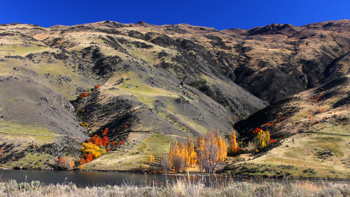A Niwa climate scientist is expecting to find the South Island's postcard glaciers and snowlines in a "crappy" state after another scorching summer.
And new research finds that one of the main, glacier-melting drivers of what was our fifth-hottest summer on record – marine heatwaves – could grow even longer and more severe by the end of this century.
As glaciers are extremely sensitive to shifts in temperature, scientists regard them as useful coalmine canaries for climate change.
One recent study estimated that one of biggest melt-years ever observed in New Zealand - 2018 – was made 10 times worse by a warming climate.
Ahead of an annual aerial stocktake of around 50 index glaciers later this month, survey team member Dr Drew Lorrey is anticipating the effect of another hot summer to be visible.
"I'm expecting a crappy year.... and you can quote me on that."
Last week, Niwa reported temperatures over summer were "well above average" along the South Island's West Coast, and also above or near average elsewhere in the island.
Along with a La Niña climate system, the seasonal warmth was also fueled by heated coastal waters – and marine heatwave conditions that developed last November were still active around the west coast, as well as other areas.
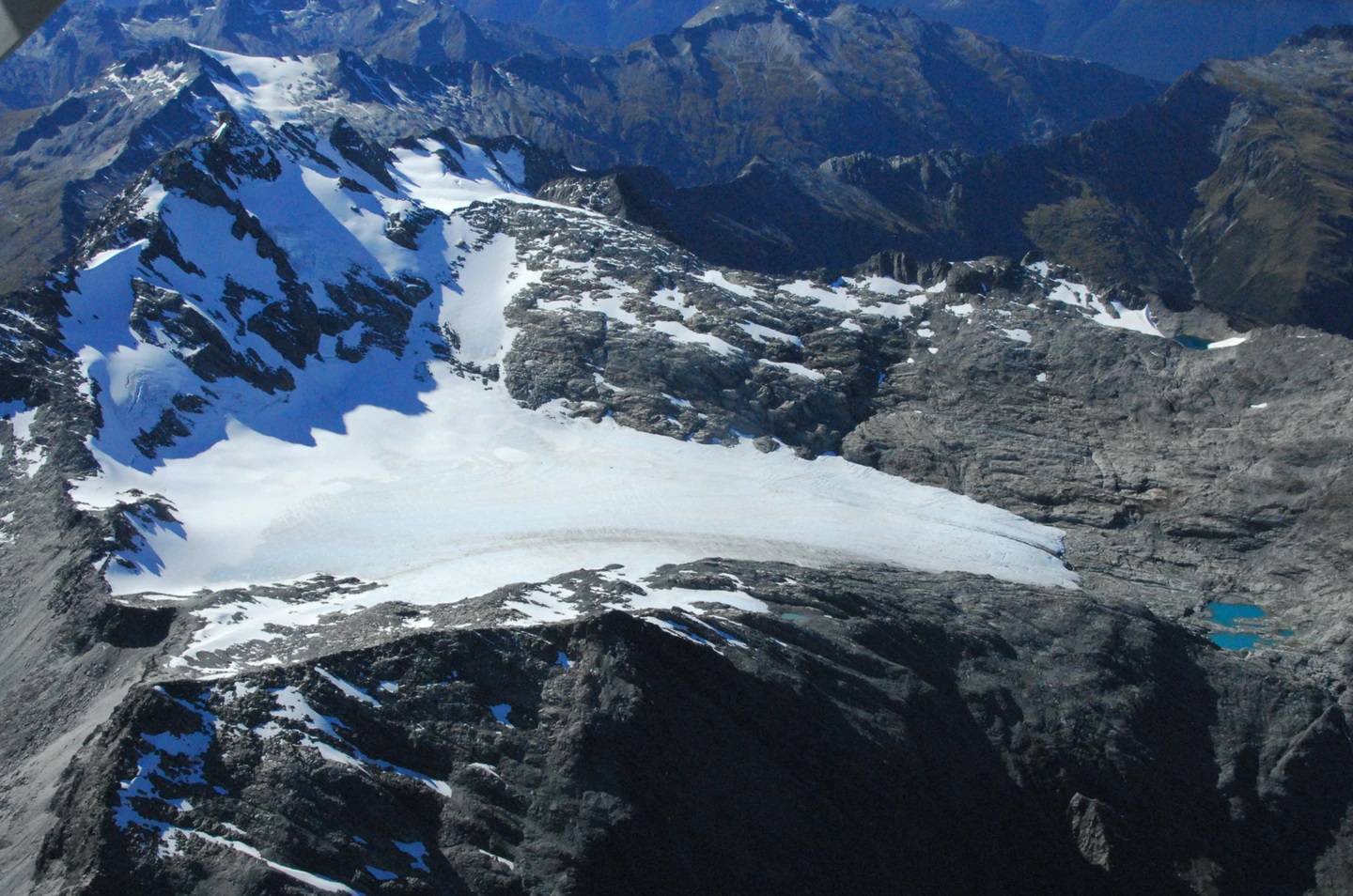
The glacier atop Mt Butler pictured last year. The snowline seen across the glacier marks the altitude where a balance between retention or melt of snow and ice are equal. Photo / Drew Lorrey, Niwa
Seas warmed to record temperatures in some parts of the country, while elsewhere, they came in second only to an unprecedented event in 2017-18.
Lorrey explained that marine heatwaves were especially bad for southern glaciers because, when surface temperatures in the Tasman Sea climbed, that warmth also influenced local air temperatures.
"When those signatures get pushed on land and advected up to altitude, the glaciers experience more heat, and when you have more heat, you get more melt," he said.
"When you get melt, you're diminishing the amount of material that remains not only from last season's snow, but you're eating into the bank of snow and ice that fell in previous years."
What had been especially alarming in past heatwave years like 2018, he said, was observing snowlines at or near the top of mountains where glaciers were located.
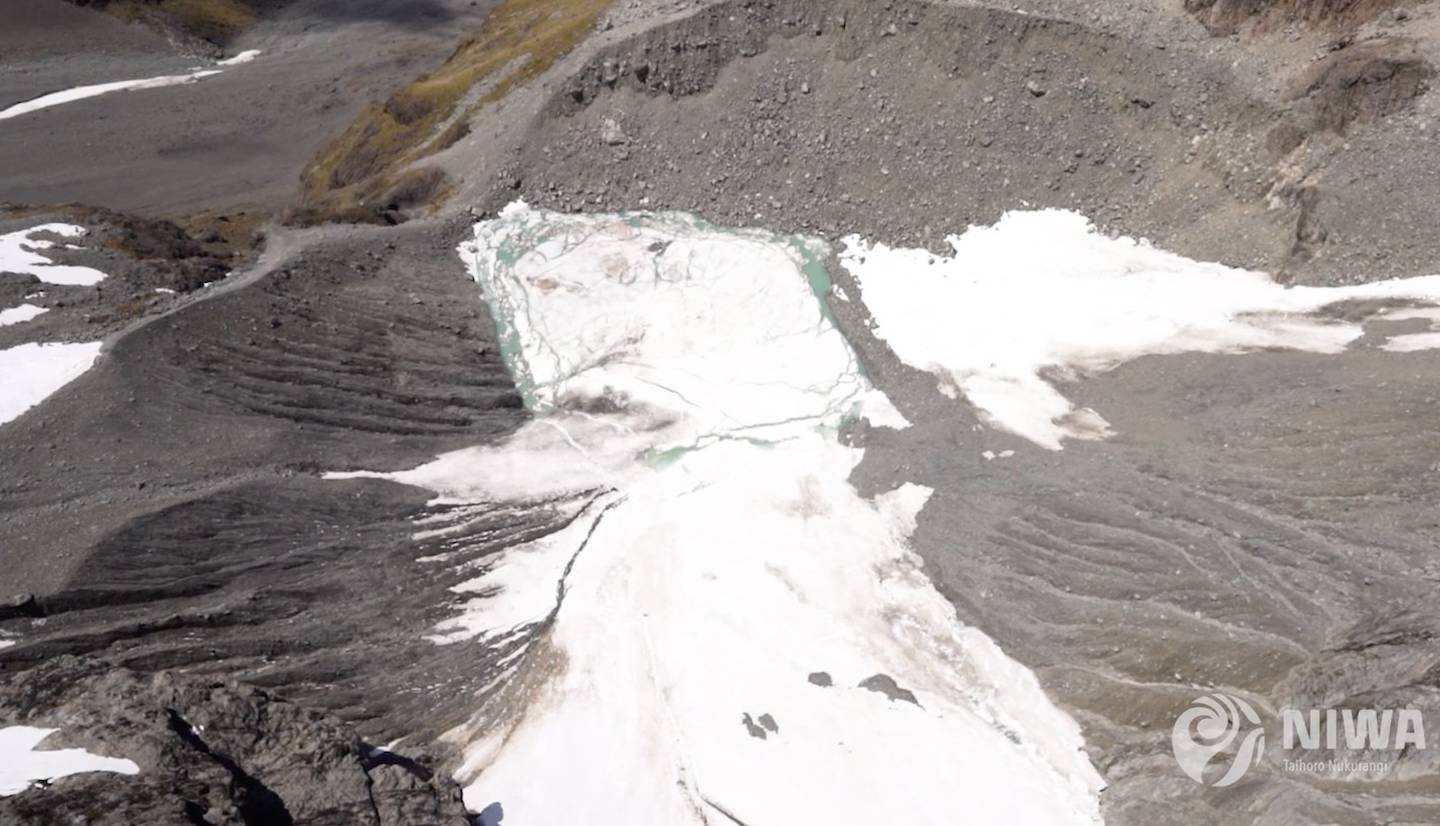
The Faerie Queene glacier in North Canterbury, pictured in December 2020, is flanked by moraine ridges that show it has undergone retreat. Photo / Rebekah Parsons-King, Niwa
"That means the entire snow and ice pack was exposed to melting. In order to have a glacier, you have to have that snowline more frequently below the top of the mountain."
Over the four decades, the alps have shed nearly a third of their ice volume - equivalent to the basic daily water use requirements of our current population for that whole period.
When the late and renowned glaciologist Dr Trevor Chinn set up the survey measuring this loss in the late 1970s, he travelled as far north as the Kaikoura Ranges, capturing photographic evidence of several glaciers in north Canterbury along the way.
In 2018, he visited some of those sites and decided it was virtually pointless to return to several.
"We're looking now at transferring the snowline measurement onto glaciers that are higher than the ones that Trevor initially set up," he said.
"So, we've got index glaciers going extinct."
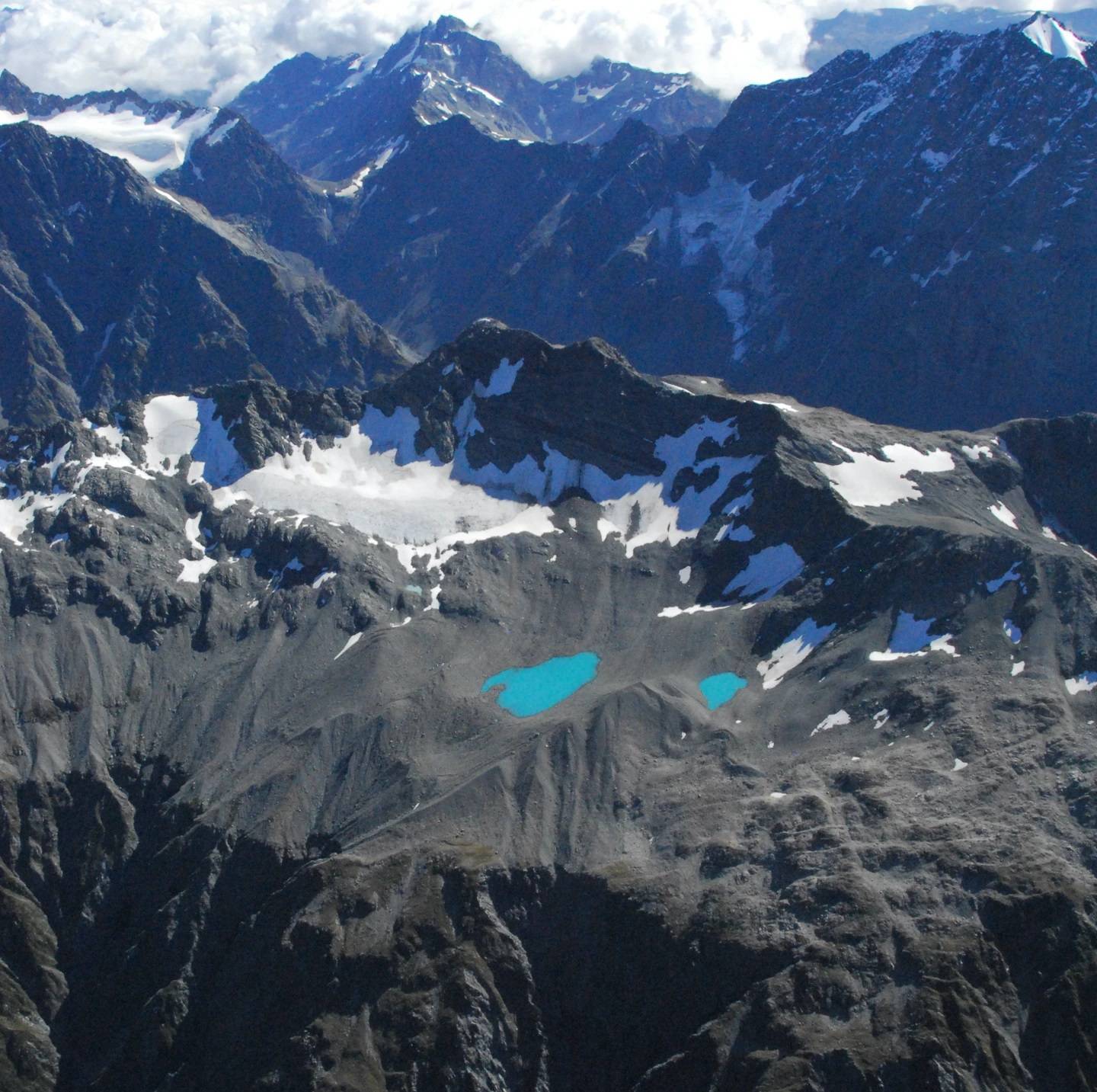
Brewster Glacier in Mt Aspiring National Park, as pictured last year. Photo / Drew Lorrey, Niwa
Lorrey said we appeared to be seeing the onset of an "accelerated rate of rise" in the alps' snowline – with a "severe impact" on the cross-section of index glaciers surveyed.
"As many as 30 to 40 per cent of the glaciers Trevor initially started surveying, in 10 to 15 years' time... they're just not going to be viable anymore."
Farther out, international researchers have reported that as much as three quarters of New Zealand's ice could vanish by 2100.
"It's great to have snow-capped mountains and, if not for Covid, we'd have a lot of tourists coming to see these glaciers right now," Lorrey said.
"But there's going to be a lot less of that landscape that's glacierised in the future – so you're going to have to go further in to be able to experience it."
Snow and glaciers also contributed to water resources, while providing ecosystems for a range of life, including taonga species.
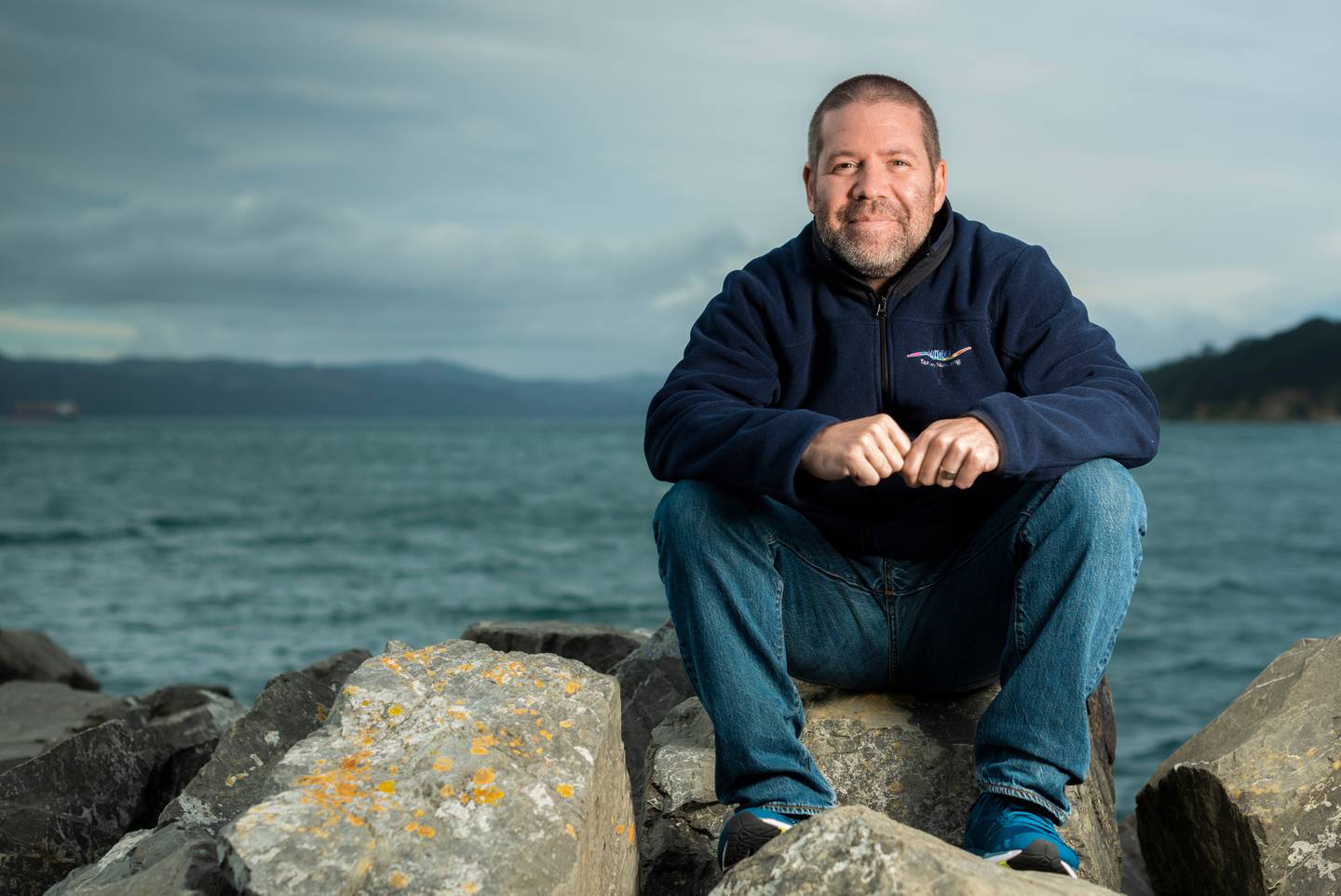
"I'm expecting a crappy year ... and you can quote me on that," Niwa scientist Dr Drew Lorrey says of the upcoming snowline survey. Photo / Dave Allen
"While we still get snow every year during winter and spring, and warmth and melt every summer, it's the balance between winter and summer that is becoming less equitable," he said.
"These really strong summers and the marine heatwaves that we're getting during the warmest time of year... that is dramatically driving the situation toward a negative mass balance."
Climate scientist Professor Jim Salinger said it was notable that three of the largest marine heatwave events had all occurred within the last five years.
Among natural variables, he said our heating of the planet had been playing a part in warming up seas.
"Climate change means global and regional oceans are warmer than they used to be."
Salinger's own work on glaciers has also implicated another key driver in their decline: a climate indicator of storminess in the Southern Ocean, called the Southern Annular Mode (SAM).
In its positive phase, the SAM was associated with relatively light winds and more settled weather over New Zealand latitudes, along with calmer ocean waters.
"And we've had two things this year: a La Niña and a strongly positive SAM," he said, adding that yet another storm-blocking anti-cyclone was on its way.
Meanwhile, new research has found that, by 2100, the 40-odd marine heatwave days we currently see in a normal year will increase to between 80 days in a low-emissions, best-case scenario – and a worst-case 170 days.
For some regions, such as the southern tip of the South Island, there was also a high chance that marine heatwaves began to last more than a year.
The research, carried out as part of the Deep South national science challenge, also explored intensity of future marine heatwaves.
For coastal waters, average marine heatwave intensities could increase by between 20 per cent and 100 per cent. For the North Island, this meant an average marine heatwave could be between 0.5C and 2C more intense than today.
"The impacts of climate change are happening all around us and New Zealand isn't immune," research lead and Niwa ocean modeller Dr Erik Behrens said.
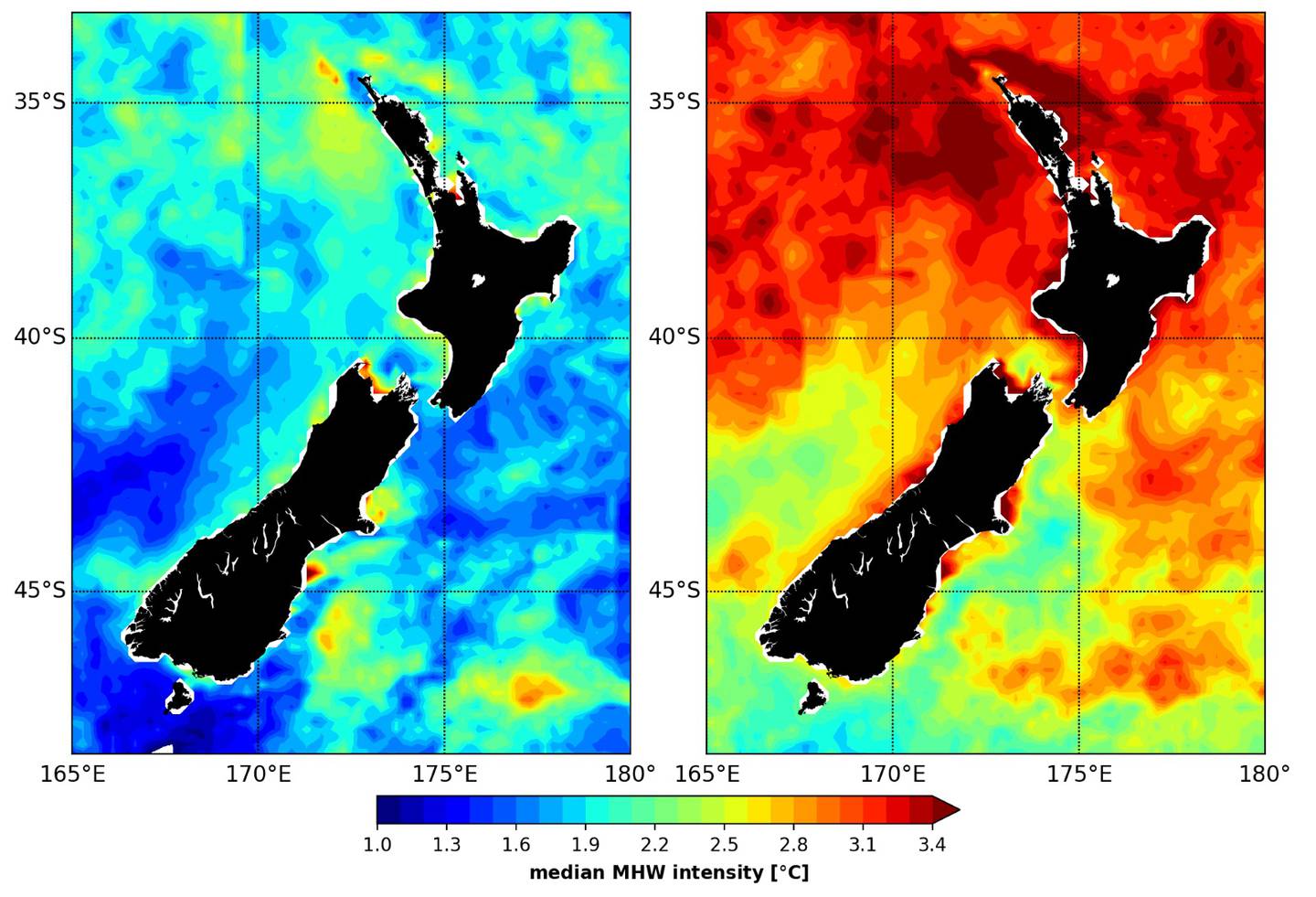
This graphic compares marine heatwave conditions today and how they might appear in 2100. Source / Niwa
"We're just coming off the back of one of our most intense marine heatwaves, like what we experienced in 2017. Our work indicates that this will start to become the norm as time goes on."
"Marine heatwaves can have significant impacts both at sea and on land. They kill off corals, disturb ecosystems, and can also pose a problem for fishing and aquaculture, as well as contributing to land heatwaves and climate extremes across the country."
Particularly interesting, he added, was a disparity between regions, with some coastal areas predicted to experience a much bigger intensity, frequency and duration of warming seas than others.
"This is important to know so we can focus our efforts in helping marine ecosystems adapt to these changing conditions."
Take your Radio, Podcasts and Music with you









